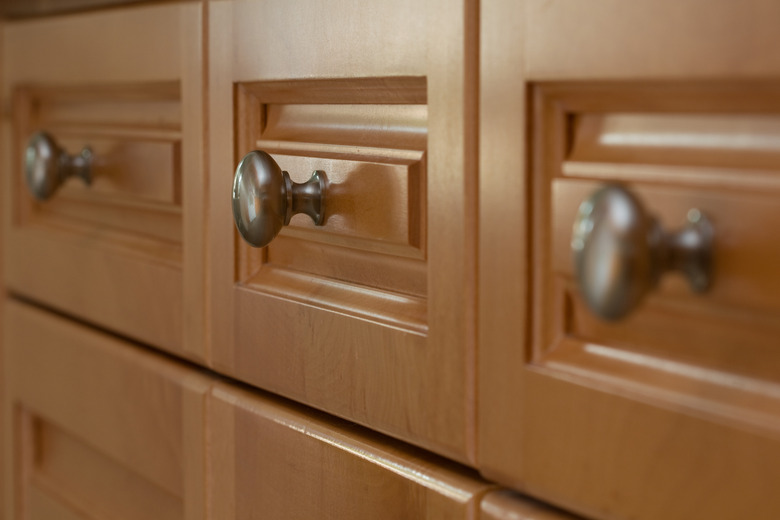How To Remove A Cabinet Knob That Is Stripped And Frozen
Cabinet knobs are held on by bolts, so when a knob is stripped and frozen, it's the bolt you have to worry about. Whether the handle has one bolt or two, the heads are almost always accessible from the back of the door or drawer face, and they may or may not be recessed or countersunk.
When a bolt gets stuck, corrosion and rust are often the culprits. If you try too hard to remove a stuck bolt with a screwdriver, you run the risk of stripping the head and making removal that much more difficult.
Spray lubricant dissolves rust and loosens stuck bolts, but it won't help if your cabinet knob or door knob screw is stripped, because there's no way to get it where it needs to be. Fortunately, that's just one of many stripped screw removal hacks that handypeople have developed over the years to free stuck screws and bolts.
The Rubber Band Stripped Screw Removal Hack
The Rubber Band Stripped Screw Removal Hack
The simplest method for getting a stuck screw to turn is a remedy for a screwdriver that slips out of a stripped head: increase the friction with a rubber band. The best rubber band for this procedure is one that is at least 1/4-inch wide. Place it over the screw head, press down on it with a screwdriver and maintain as much pressure as possible while you turn the screwdriver counterclockwise.
For this method to work, the screwdriver must be able to fit at least partially into the slots on the screw head. It can't if the head is painted over, so you have to scrape off the paint with a utility knife. If you can't get the paint off, at least deepen the slots with the knife or by tapping the screwdriver into the head with a hammer. If this doesn't help provide room for the screwdriver, you might need to use another method to get the screw out.
Use a Screw Extractor
Use a Screw Extractor
Not everyone is a fan of screw extractors, but they are intended for situations just like this. So, if you have one, it's worth giving it a try.
A screw extractor is a conical drill bit with spiraling reverse threads. It's supposed to bite into the screw head and make it turn when you put downward pressure on the drill and run it the tool in reverse. You'll have more luck using a screw extractor if you pre-drill a small indentation in the head with a conventional 1/8-inch boring bit, making the indentation at least an 1/8 inch deep, which is enough to allow the head of the screw extractor to grip the edges and turn the screw.
Use Pliers or Vise Grips
Use Pliers or Vise Grips
A problem that happens all too often is that a screw or bolt head strips before you've fully extracted it. This typically happens you're operating a drill at high speed, and you don't keep the drill straight or you don't put enough downward pressure on the screw. If the head has cleared the surface by a small amount, at least an 1/8 inch, you can use pliers or vise grips to finish the job.
The pliers or vise grips need to grip the edges of the screw in the recessed part of the jaws with the large serrations, which means holding the tool parallel to the surface from which you're extracting the screw. Hold the handle tightly, or clamp the jaws if you're using vise grips, and keep the handle parallel to the surface while you turn the tool counterclockwise. The screw will get progressively easier to turn until you can finish the job by hand.
